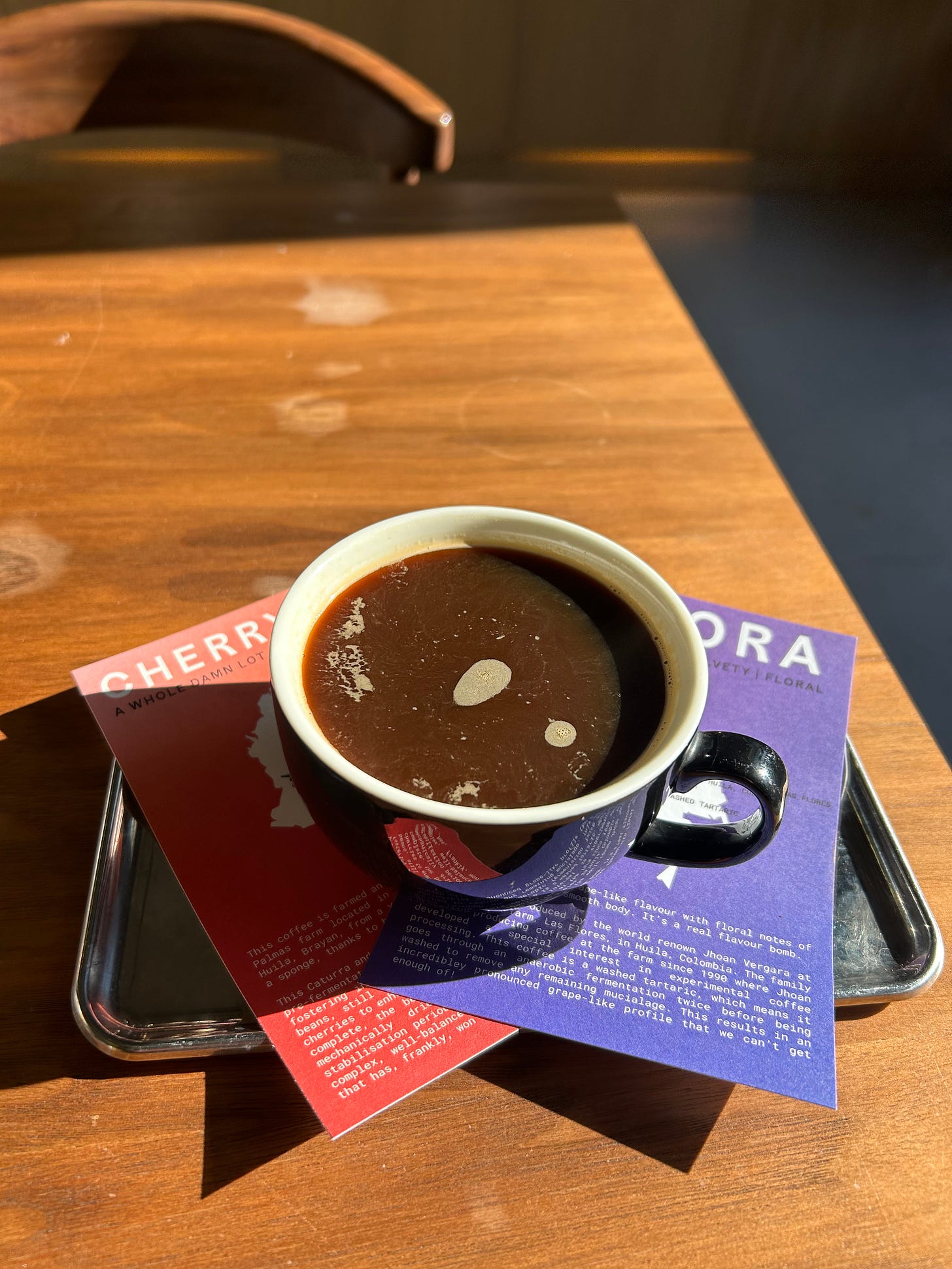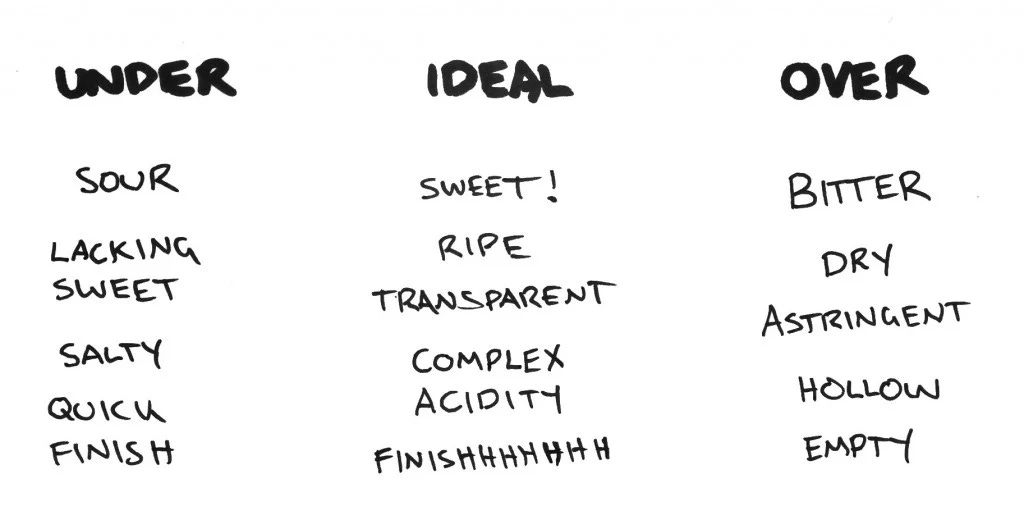Coffee is extraction. Whether it’s chemex, V60, Aeropress or an espresso, the formula is simple; you have a ground bean, water and a means of extracting it.
Therefore, aside from what God has given you to brew your coffee (say beans, grinder, water etc), your ability to affect the brew depends on how you extract it.
In quantifying extraction, the coffee lords have given us a simple metric - the average extraction yield (AEY); defined as “the percentage of soluble compounds that are extracted from the dry coffee grounds into the final brewed beverage.” In plain speak - how much of the ground is dissolved in your cup.
Generally speaking, the coffee buffs aim for an AEY of 18 to 22%. This is considered the ideal brew - a complex, clear and radiant concoction of sweetness, acidity and ripeness. An extended venture across miles of flavour profiles.
Outside of this sublime nirvana lies the uglier terrains of under and overextracted coffee.
When you underextract, you’ll feel like you’re drinking a vegetal, sour, salty soup - like the brew got dumped over text. This may mean your brew tastes like peanuts or worse, grass.
In contrast, when you overextract, you might feel like your tongue is getting air dried by more tight, bitter and “astringent” tones. An overextracted coffee might taste like burnt toast or wood smoked on a steel grill (say carbonated or metallic).
From experience, most of the commercial coffees you get will be over-extracted **cough (blank street).
But at home, we can do much much better.
When aiming for the nirvana of brewdom, you need two things - awareness and year 7 science. Awareness, in spotting where on the coffee extraction spectrum you’ve landed (see below) and dummy-level science for manipulating the odds in your favour.
Thus, in order to get good of the game of coffee treat the brew like a spiritual endeavour. Meditate on it, let the vapours roll through your nostrils, bask in a heavenly morning sunrise and then… sip.
Then, when aiming for that glorious 18-22 range, there are two key variables that we can manipulate.
Grind size
Water temperature
Grind Size
In short, the finer you grind, the greater the AEY. As you learnt in Year 7 science, caster sugar will dissolve faster than a sugar cube.
In this case, the soluble compounds in coffee will dissolve faster for a finer ground compared to a coarser ground.
Therefore, the finer your ground, the greater the surface area and the greater the average extraction yield.
Temperature
Simply put, the higher the temperature, the greater the AEY. Hotter water will result in steeper diffusion gradients, increasing the rate at which soluble compounds will dissolve in a brew; therefore increasing the AEY.
Again, to use the sugar analogy - a sugar cube will dissolve faster in hot tea than in tap water.
Therefore, we have a simple heuristic to correct course if you’ve missed the mark:
If you’re under extracted, grind finer or brew hotter.
If you’re over extracted, grind coarser or brew cooler.
Boom.




